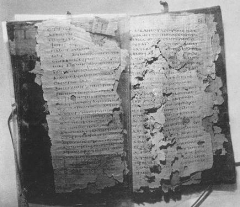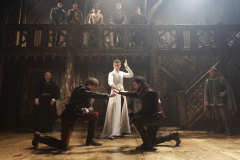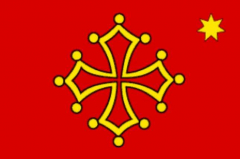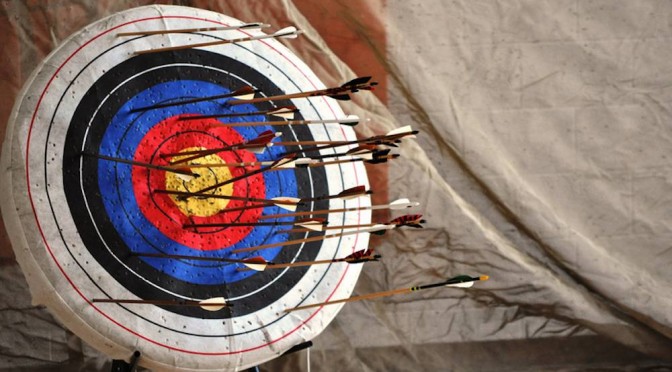 IThere is sadness in Ximene’s voice because on the one hand she is being asked to sacrifice everything, possibly even her life, to help this faith survive and yet now she is being faced with the realization that the courts of love, an integral part of the culture promoted by the faith, can be used differently by those with different objectives.
More generally it is not like this. Women from the south inherit lands, titles and corresponding responsibilities without any need to develop relationships with powerful men. It did not make them any less feminine, any less desirable. Lords and troubadours both traveled far to pay homage to Etiennette de Pennautier, who was known as Loba, the she wolf, in her own castle. Loba took many lovers but she rejected many more suitors than she accepted. Those who pleased her received her Accolade, a very special knighthood. ( for more details on the award of the Accolade see -More about Ximenes World /Chivalry.)Though at the start of the story Ximene is living in a relative backwater, she is not surprised that she is sought as a marriage partner by the Black Prince. She is confident that she can negotiate a marriage contract which will deliver her own objectives. As the story progresses her objectives change. A satisfactory conclusion proves elusive but from where did her initial confidence arise?
IThere is sadness in Ximene’s voice because on the one hand she is being asked to sacrifice everything, possibly even her life, to help this faith survive and yet now she is being faced with the realization that the courts of love, an integral part of the culture promoted by the faith, can be used differently by those with different objectives.
More generally it is not like this. Women from the south inherit lands, titles and corresponding responsibilities without any need to develop relationships with powerful men. It did not make them any less feminine, any less desirable. Lords and troubadours both traveled far to pay homage to Etiennette de Pennautier, who was known as Loba, the she wolf, in her own castle. Loba took many lovers but she rejected many more suitors than she accepted. Those who pleased her received her Accolade, a very special knighthood. ( for more details on the award of the Accolade see -More about Ximenes World /Chivalry.)Though at the start of the story Ximene is living in a relative backwater, she is not surprised that she is sought as a marriage partner by the Black Prince. She is confident that she can negotiate a marriage contract which will deliver her own objectives. As the story progresses her objectives change. A satisfactory conclusion proves elusive but from where did her initial confidence arise?
More research was required which carried me into three separate areas; the concept of nobility, the right to rule and the sangreal, the holy blood.
The three topics are closely related but are really quite distinct. Certainly they explain why Ximene had great confidence in her own right to command attention and her evolution into a warrior queen.
The Cathar Religion
 In the Cathar religion there was a distinction between the “Credentes”, the believers and the “Perfects” the leaders, who performed a similar role to priests.
In the Cathar religion there was a distinction between the “Credentes”, the believers and the “Perfects” the leaders, who performed a similar role to priests.
Though the rules for the Perfects are strict , the rules for the Credentes as liberal. Not only is opinion and literature all in agreement on this point but the lifestyle of many known historical figures supports this belief. In particular Credentes were taught lovemaking as a skill and believed “it was not possible to sin below the waist”.
In these circumstances I believe that homosexuality for both sexes would be unremarkable. I have therefore allowed Ximene to be bisexual. As the story develops it makes a good counterpoint to John’s upbringing under the tutelage of the Church of Rome.
The Roman Empire
 All of this later research has led me to the history and records of the Roman empire and beyond. I have been distracted beyond belief by statements that Cathars were good christians, that they followed the teachings of christ and yet at the same time that they did not believe Jesus was God and they thought that his cruxifiction was an illusion.
All of this later research has led me to the history and records of the Roman empire and beyond. I have been distracted beyond belief by statements that Cathars were good christians, that they followed the teachings of christ and yet at the same time that they did not believe Jesus was God and they thought that his cruxifiction was an illusion.
At school I was taught Latin and Greek. It was sold to us as providing a tremendous advantage in accessing classical texts directly without the use of an interpreter. This we were told, should make it possible to see how translators and editors often distort original writings in a search for theological and political correctness.
However in my own search for understanding I have learned such distortions do exist and I know just enough to discern the importance of the differences. However I have discovered we have virtually no written original material, regardless of what my teachers told me. There are stone tablets in egypt and even scattered throughout the roman empire which probably are more reliable that anything contained in books. I now confess to being sceptical about much of recorded history and theology. I have had to make far more assumptions than I ever thought I would have to.
Status
 Andrew Buchan, Eddie Redmayne and Ben Turner, with cast, in "Richard II" by William Shakespeare, in London. Director Michael Grandage delivers a simple, powerful and straightforward production.The first volume of Ximene’s adventures, ” The Virago” is now finished, though the editing (my part not my editors) is taking far longer than my estimates. The second volume about Ximene ” The Young Eagle” is ready for editing.
Andrew Buchan, Eddie Redmayne and Ben Turner, with cast, in "Richard II" by William Shakespeare, in London. Director Michael Grandage delivers a simple, powerful and straightforward production.The first volume of Ximene’s adventures, ” The Virago” is now finished, though the editing (my part not my editors) is taking far longer than my estimates. The second volume about Ximene ” The Young Eagle” is ready for editing.
To complete Ximene’s story, I have plotted the story structure for four further books. These last two books will cover the same ground as Shakespeare’s Richard II and Henry IV (parts I & II) but seen through the eyes of Ximene and John Stanley.
The alternative John Stanley
 The Story of John Stanley is also convoluted.
The Story of John Stanley is also convoluted.
There are other documents outside of the Seacome history which give a less than glowing description Of John Stanley. He is obviously a remarkable man; tournament champion,military strategist, political opportunist. sensitive negotiator but in later life a brutal adversary. At the beginning of his life his ambition was to own a small farm but he lived to commanded armies and rule a nation.
He was emphatically not a man to be trifled with. Some records show him as being charged with the murder of Thomas Clotton in 1376 and being declared an outlaw. This may in fact be a different John Stanley as other records show him as king’s ambassador to Ireland in 1377. The two events do not seem to reconcile with each other. He was in Ireland again in 1380 when the Lord Lieutenant, Edmund Mortimer, drowned crossing a river in Cork. Mortimers wife, Phillipa de Burg died also in Cork, leaving the heir to the throne, Roger Mortimer as an orphan . There are question marks aboutJohn Stanley’s potential involvement in both these deaths.
The story of his life rapidly transforms into a story of the political forces which facilitated his rise and the powerful women who both helped and used him as he rose to a position of prominence.
Story weaving
 The Flag of OccitanIt is four or five different stories; the powerful women in England all of whom interacted with John Stanley, John Stanley’s remarkably rapid progression with the Black Prince in Occitan. Then as the research continued the story of the Cathar faith emerged and with it the spectre of the Holy Inquisition. Finally and most importantly it is the story of Occitan itself. Occitan had everything required to aspire to nationhood; its own unique language and culture and clearly defined borders. It still today searches for independence.
The Flag of OccitanIt is four or five different stories; the powerful women in England all of whom interacted with John Stanley, John Stanley’s remarkably rapid progression with the Black Prince in Occitan. Then as the research continued the story of the Cathar faith emerged and with it the spectre of the Holy Inquisition. Finally and most importantly it is the story of Occitan itself. Occitan had everything required to aspire to nationhood; its own unique language and culture and clearly defined borders. It still today searches for independence.
The task was and still is to bring these stories together.
